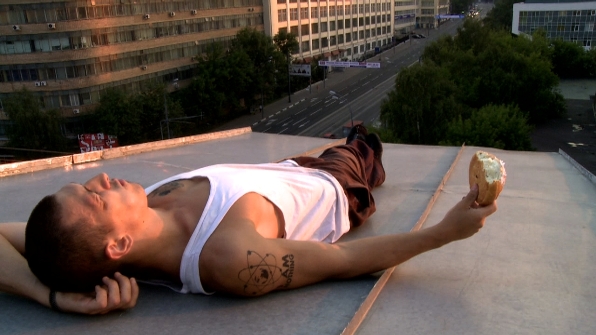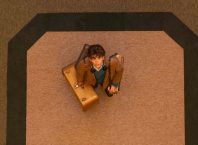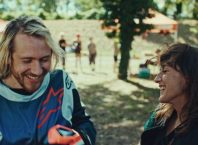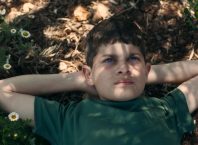
If you missed seeing this exceptional film at DocAviv 2011, The Zimmer will be showing Life in A Day on Monday, January 9, 2012 at 21:00. A documentary film project by YouTube, produced by Ridley Scott, and directed by Kevin MacDonald, Life in A Day was made from footage sent in by users from over 100 countries on July 24, 2010. The film premiered at Sundance, and was the opening film of DocAviv 2011. This screening will be presented as part of The Zimmer’s Documentary Film Club hosted by filmmaker Ohad Milstein.
The film’s editor Joe Walker, attended the screening at DocAviv 2011, and participated in a Q & A led by Dan Muggia, with questions from the audience:
Dan Muggia: Usually it’s quite clear, what’s a director, what’s the editor – here I guess it’s confusing. Can you tell us, what was here to direct? Or is it like any film that the editor is saying: you know I actually did the film.
Joe Walker: Well, it’s my hands, that’s how I saw it. There’s 320 directors so Kevin was very generous in giving everyone else a credit. We also fantasized that if ever we win an award or an Oscar or a BAFTA that 320 people have to come on stage and receive it no I worked with k very closely I reviewed the material for about two months. I didn’t see everything, there’s 4 and a half thousand hours (4,500) material but we had a team of 24 researchers who all speak different languages and we groomed them together and we looked at every clip that was sent to us and we tagged every clip so that we could use the clip we didn’t know what the film was going to be. We had no idea what the film was going to be until we started noticing trends but I’d say about working with Kevin the director that we both found the same things amusing. I found particularly men being stupid very funny and there was a lot of that material. So we laughed at the same things so that’s how we got the film. Anyway, ask your questions.
Q: Why did you pick this certain day?
JW: There are two reasons: the first is that it’s 24/7, which means almost nothing outside of Europe and …also I think it was the first Saturday after the World Cup.
DM: And did you make sure that everything was shot that day? There was a way of assuring that?
JW: One of the big disappointments in the film was that while we were working on things we got very interested in certain clips and then our researchers – we had 8 researchers who were constantly trying to find out more about the clips. And some people would put up a clip and when we came back to them and said we’d like to use your clip please send the original material at a quality that we can show on the big screen. They’d say actually we really respect Kevin MacDonald and we have to tell you that it was shot two weeks before. And we’d go Noooooo!!!! There were also …most people sent very light material. It was one of the hardest things to find dark and serious material and we wanted the film to have a shape of going from light to dark and from birth to death and going from midnight. And so we struggled to find dark stuff. And uh, one of the big problems was a lot of the dark stuff was not shot on the day so we lost a lot of clips. As far as I know everything was shot on one day.
Q: The clips from Africa, were they shot by Africans?
JW: There’s quite a few different clips from Africa. I can tell you that for example the sequence where a lady explains how she kneels before a man is shot by an African but the other one I can think of was… not the Angolan women who pound maize was shot by a Portugeuse researcher who works in Angola. Those are the only two I can think of immediately.
I mean it’s an interesting point that’s raised by this, half of the material came from North America and Canada, and so we were trying to make a truly global film and we had two ways of trying to help that. One was by searching really hard for the non-American footage and trying harder, we worked harder on that footage to make it work. The other thing that we did was because so many parts of Africa have bad internet connection we sent out 5 hundred digital cameras and the deal was you keep the camera but send us the SD card. So I think we ended up with about 500 hours of footage from the little cameras. For example the boy that does shoe shining, that was in Peru and that was from this little camera. These cameras are so cheap in England they cost 80 pounds and we got some bulk discount for 500 of them. Terrible sound, but very good picture.
The other thing that’s got to be said is there’s a difference between the way people in the first world shoot films and the way the people in the third world shoot films. A good example is the hoarder, we call him the hoarder, a guy who lives with the man who collects pianos, this crazy guy. He there’s something about his… it’s in the blood, in American blood to film the way that they do. He knows exactly when to pan and when to sort of self-cut, if you know what I mean, whereas quite often a lot of the material that we struggled with from the third world would be very static. Shots of people standing very stiffly, and they can’t really understand why they’re being asked these questions and sometimes in the background you’d see something fascinating.
See something fascinating – Life in A Day at The Zimmer, 5 HaGdud HaIvri Street, Tel Aviv, on Monday, January 9, 2012 at 21:00. Look for more exciting Zimmer events on the Zimmer facebook page.





